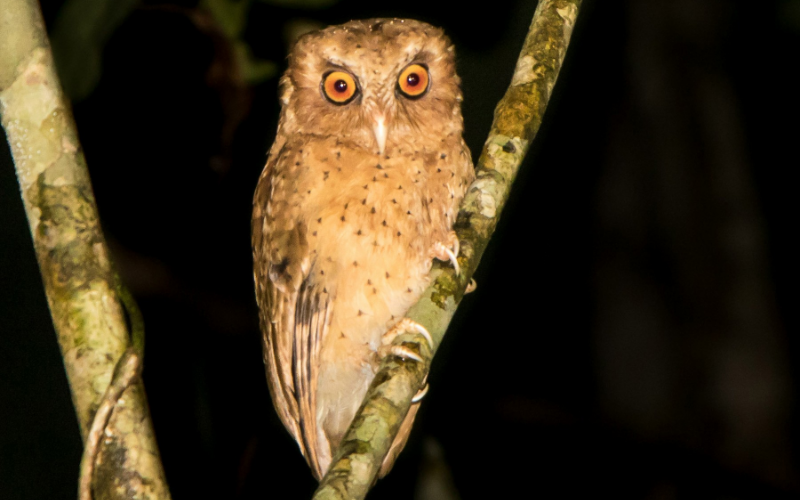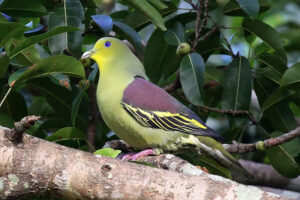About Serendib Scops Owl
The Serendib Scops Owl (Otus thilohoffmanni), also known as the Sri Lanka Bay Owl, is a rare and elusive species of owl found only in Sri Lanka. The bird was only recently discovered in 2001, making it one of the newest owl species to be identified. Despite its recent discovery, the Serendib Scops Owl has quickly become an important part of Sri Lanka’s unique biodiversity and a subject of great interest for birdwatchers and conservationists.
Appearance and Range Serendib Scops Owl
The Serendib Scops Owl is a small, brown owl, measuring around 20 cm in length and weighing approximately 85 grams. It has large, bright orange eyes and distinctive ear tufts, which give it a unique and striking appearance. The bird’s plumage is primarily brown, with white spots on the upper breast and belly.
The Serendib Scops Owl is endemic to Sri Lanka, meaning it is found nowhere else in the world. Its range is limited to the island’s central and southern highlands, where it inhabits montane forests at elevations of 1,000 to 2,000 meters. The bird is primarily nocturnal and is known to roost in tree hollows during the day.
Behavior and Ecology of Serendib Scops Owl
The Serendib Scops Owl is a nocturnal predator, feeding on a variety of small prey including insects, spiders, and small mammals such as rodents and shrews. Like other scops owls, it has excellent night vision and hearing and uses its sharp talons to capture prey. The bird is also known for its distinctive calls, which include a soft, trilling whistle and a series of rapid, high-pitched notes.
Little is known about the Serendib Scops Owl’s breeding habits, but it is believed to mate for life and to lay two to three eggs in a clutch. The species is thought to be monogamous, with pairs defending territories and communicating with each other using their distinctive calls.

Where Can You Find Serendib Scops Owl
- Sinharaja Rain Forest
- Kitulgala Forest Reserve
- The Peak Wilderness Sanctuary
- Morapitiya Forest Reserve
Conservation Status and Threats
The Serendib Scops Owl is considered critically endangered, with an estimated population of only around 400 individuals. The species is threatened by habitat loss and fragmentation, as forests in Sri Lanka’s highlands are cleared for agriculture, logging, and development. In addition, the bird is vulnerable to climate change, which could affect the availability of prey and disrupt its breeding patterns.
Conservation efforts for the Serendib Scops Owl are focused on protecting its remaining habitat, as well as raising awareness about the bird’s importance and vulnerability. The species is protected by law in Sri Lanka, and conservation organizations are working to establish protected areas and promote sustainable land use practices in its range.
Conclusion
The Serendib Scops Owl is a rare and important species, with its recent discovery highlighting the incredible biodiversity of Sri Lanka. Despite its small size and elusive nature, the bird has quickly become a subject of great interest for birdwatchers and conservationists, who are working to protect its remaining habitat and raise awareness about its plight. Through conservation efforts and public awareness, we can help ensure that this unique bird and its habitat are preserved for future generations.











